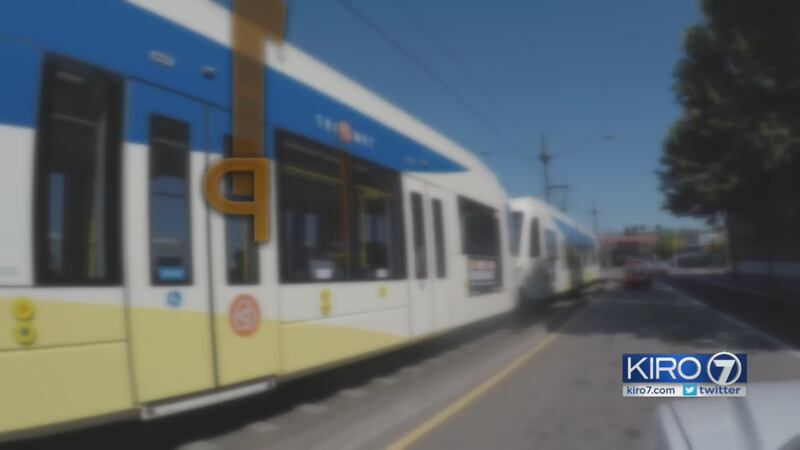Sound Transit 3 could cure Seattle’s transit envy of other cities, but would it improve the region's awful traffic?
Here's a look at Portland's light rail:
Seattle's smaller Northwest neighbor, Portland, has had light rail long enough that some commuters can't imagine getting by without it.
"It works really well. It gets me there on time," said O'Nesha Cochran as she waited for a MAX train. "I don't have to worry about getting stuck in traffic.
Portland's first light rail line opened in 1986, 23 years before Seattle's.
That's led to some transit envy.
"Portland got a much earlier start with light rail," said Jarrett Walker as he rode the MAX with KIRO 7.
Walker lives in Portland, but works as a consultant to transit agencies all over the world.
Walker points out that downtown, MAX runs right on the street.
"It means the light rail system through downtown is beautiful and friendly and extremely slow," Walker said, pointing out it can take 20 minutes to creep across downtown.
Trains are constrained to two cars, the length of a city block.
How does this compare to Seattle?
By contrast, what Sound Transit now runs through Downtown Seattle, and largely proposes in Sound Transit 3, is what's called "grade separated."
That means new trains run either underground or above the street, so they don't get stuck in traffic.
And each line will come often, every six minutes during peak commutes.
>> Related: Is ST3 more affordable than the Seattle Times? Here's what the numbers say
Sound Transit says that compares to every 10 to 15 minutes in Portland, and every 15 minutes in Dallas, Denver and San Francisco.
Sound Transit says at stations where two lines run, they will come every three minutes.
"Everything about the Sound Transit plan is being built to be truly rapid transit. It's truly rapid transit, it's frequent and it's reasonably fast and that is just not what Portland is," Walker said.
Where ST3 would extend:
Sound Transit 3 would extend light rail to Ballard, West Seattle, Everett, Tacoma, Downtown Redmond, South Kirkland and Issaquah.
It would also extend commuter rail south to DuPont, and build bus rapid transit lines along Interstate 405 and State Route 522.
Since new light rail stops opened at Capitol Hill and Husky Stadium this year, Link ridership soared 76 percent over last year.
"I love it. I wish it went from Blaine to Portland," said passenger Frank Anderson, as he got off a train.
"It makes my commute a lot easier. I hop on and hop off. I don't get stuck in traffic on the buses because the traffic is pretty horrendous," said commuter Stephanie Verkamp.
ST3 supports says region needs light rail expansion despite costs:
ST3 campaign supporters say the region needs to seize this moment.
"We have a once-in-a-lifetime opportunity to make a transformational investment in our transportation system," said Shefali Ranganathan, of Transportation Choices.
But the cost is high -- a breathtaking $54 billion.
"It's too expensive for what we're going to get out of it, absolutely," said Frank Dennis, of the"No on ST3" campaign.
ST3 opponents say there are cheaper, more effective alternatives that should be explored,such as expanding bus rapid transit.
As a King County councilmember, Maggie Fimia campaigned for the first light rail measure in 1996.
"It got passed with this," Fimia said, holding up a "Traffic Jammed?" bumper sticker.
Since then, she's seen traffic grow worse.
"All over the country these things get passed on the premise that they're going to reduce traffic. And they don't," Fimia said.
But will all this actually improve traffic?
KIRO 7 took the traffic question to University of Washington transportation researcher Mark Hallenbeck, and asked if ST3 will improve traffic.
"Yes, but not in the way people argue about it," Hallenbeck said.
Hallenbeck says the I-5 drive time won't improve from building light rail, but if we don't build it, traffic will become much, much worse.
"The biggest thing you're going to get out of Sound Transit is a lot of capacity, person-moving capacity that we don't have," Hallenbeck said.
Hallenbeck says new person-moving capacity will be critical as more people move here, and there's little room for costly freeway expansions.
Sound Transit projects by 2040, our region will grow by 800,000 people. That's roughly adding the current populations of both Seattle and Tacoma.
The agency says a four-car train, twice the length of those in Portland, could pack in up to 16,000 people per hour.
"People say.'Hey it's expensive.' Yeah, it's expensive because it's brand-newcapacity," Hallenbeck said.
Cox Media Group








